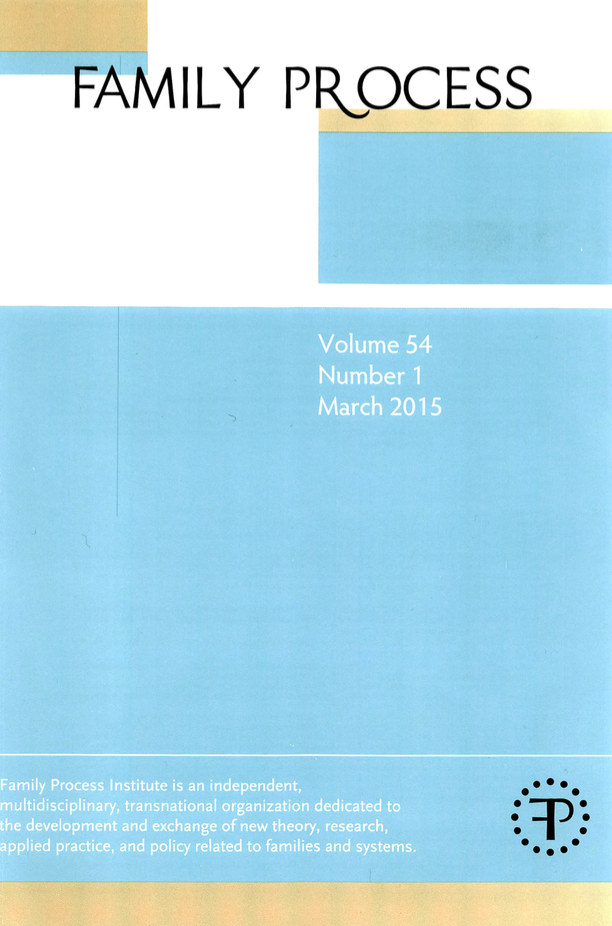
Family Process 54(1) 2015
Nachdem im vergangenen Jahr das DSM-V erschienen ist und für Furore (und berechtigte Kritik) gesorgt hat, widmet sich das aktuelle Heft der Family Process dem Thema der Beziehungsdiagnostik, die als Relational Diagnosis allerdings nur schwerfällig auch Eingang in die standardisierten Klassifikationssysteme findet. Kritik am DSM-V findet hier aber nur sehr verhalten statt. In seinem Editorial jubiliert Herausgeber Jay Lebow vielmehr: „This issue offers one of the most important collections of articles ever published by Family Process: a special section devoted to relational diagnosis. This section does not in any sense represent the birth of a new concept. Lyman Wynne, David Reiss, and colleagues launched a campaign to establish relational diagnosis in the DSM in the 1980s and 1990s (American Psychiatric Association and Task Force on DSM-IV, 1998) and, subsequent to that effort, Florence Kaslow edited an important book in which numerous contributors described many potential relational diagnoses (Kaslow, 1996). Wynne and colleagues even had success in spurring the inclusion of an axis as part of the DSM-IV (axis 5) focused on assigning a rating of family relational functioning based in „The Global Assessment of Relational Functioning“ (Dausch, Miklowitz, & Richards, 1996; Group for the Advancement of Psychiatry Committee, 1996), an instrument they had developed.
Yet all of these efforts were preliminary, a precursor to the more detailed scientific study of relational diagnosis. The special section in this issue edited by Marianne Wamboldt demonstrates the remarkable maturation of this body of work over the last two decades. A small group of investigators have asked the question, „What would a rigorous version of how to establish relational diagnosis look like?“ and have provided a number of examples. The scope of this work is quite remarkable. They have conducted field studies across 41 international sites and interfaced with both the DSM-V and ICD-11 work groups. The importance of functioning at the level of the system (and its presentation as an alternative to an exclusive focus of what is going on within the individual) has been a cornerstone of family systems theory since its beginnings (Breunlin & Jacobson, 2014; Combrinck-Graham, 2014; Lebow, 2014), but here we finally see the accumulation of evidence for the salience of various precisely operationalized relational problems. Although some continue to argue that the idea of diagnosis itself is antithetical to family systems concepts and best practice, that minority has shrunk over the years as the practical relevance of work such as that described in this section transcends these arguments (Lebow, 2013; Wamboldt, 2013). The principal questions in focus for most today center on how best to form reliable and valid relational diagnoses rather than about whether such assessment is helpful. As Heyman, Slep, and Foran (2015) and Slep, Heyman, and Foran (2015) note in this issue, without a reliable system of assessing and diagnosing problems, such as part ner violence or child maltreatment, even the most vital public health problems easily become consigned to secondary attention. Furthermore, having specific diagnoses also opens the door to better funding for treatments for those problems.“
Alle Beiträge des Heftes sind für kurze Zeit online frei verfügbar…. Die abstracts und alle bibliografischen Angaben finden Sie hier…

